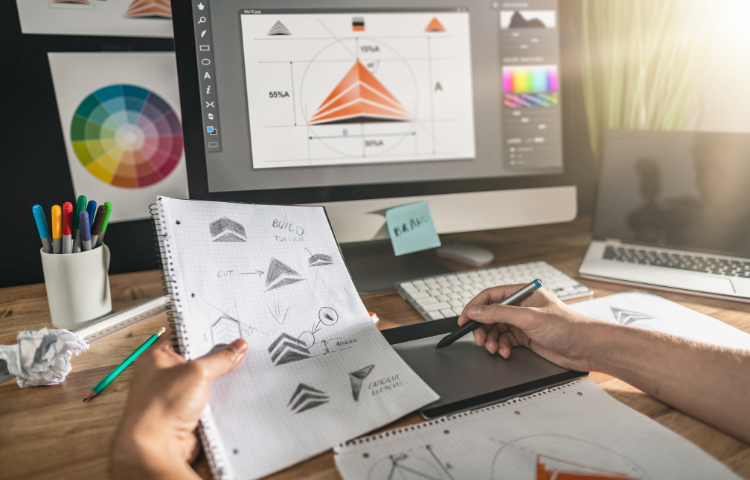
In today’s visually driven world, graphic design skills have become increasingly valuable, even for those who don’t work as professional designers. Although mastering graphic design might seem daunting for non-designers, learning the basics can significantly enhance your professional and personal life. Understanding graphic design can empower you to create compelling visuals, communicate ideas more effectively, and increase your marketability in various fields.
Enhancing Communication Through Visuals
Graphic design is a powerful tool for communication. While words are essential, visuals often convey messages more quickly and effectively. For non-designers, learning basic graphic design allows you to create clear, visually appealing presentations, reports, and marketing materials. By combining text with images, icons, and color schemes, you can ensure that your message resonates with your audience. Moreover, effective visual communication helps bridge gaps in understanding, making complex ideas more accessible to a broader audience.
Additionally, in an era where attention spans are shorter, being able to communicate visually can help you capture and maintain your audience’s attention. Whether you’re presenting a business proposal, sharing a project update, or promoting a new product, incorporating graphic design elements can make your content more engaging and memorable.
Improving Professional Versatility
In many industries, versatility is a highly sought-after trait. By learning graphic design, non-designers can add a valuable skill to their professional toolkit. Whether you work in marketing, education, or business, understanding graphic design enables you to take on tasks that would otherwise require outsourcing. This not only saves time and resources but also allows you to maintain control over your projects.
Furthermore, possessing graphic design skills can open up new opportunities for career advancement. Employers often value employees who can contribute to multiple aspects of a project. By demonstrating your ability to create visually appealing content, you can increase your chances of being considered for promotions, raises, or even new job opportunities. Moreover, the ability to design can enhance your personal brand, making you stand out in a competitive job market.
Supporting Creative Expression
Graphic design is not only a professional asset but also a medium for personal creative expression. For non-designers, learning graphic designs provides an outlet to explore creativity in new and exciting ways. Whether you’re designing a logo for a side project, creating social media graphics, or experimenting with digital art, graphic design allows you to bring your ideas to life visually.
Additionally, the process of learning graphic design can stimulate your creativity in other areas of your life. As you become more comfortable with design principles, you’ll likely find yourself thinking more creatively in your work and personal projects. Moreover, engaging in creative activities has been shown to reduce stress and improve overall well-being, making graphic design a beneficial hobby for non-designers.
Elevating Personal Projects
In today’s digital age, many people have personal projects that require visual content, from blogs and social media pages to small businesses and community events. Learning graphic designs enables non-designers to create professional-looking materials without relying on others. Whether you’re designing a website, creating flyers, or producing digital content, graphic design skills can elevate the quality of your work.
Moreover, by designing your own materials, you can ensure that your visual content aligns with your personal or brand identity. This level of customization is often difficult to achieve when outsourcing design work. Additionally, the ability to design your own content can save money, especially for small business owners or freelancers who need to manage their budgets carefully.
Enhancing Digital Literacy
In a world where digital skills are increasingly important, learning graphic design can enhance your overall digital literacy. Understanding how to use design software, such as Adobe Creative Suite or Canva, can improve your ability to navigate other digital tools and platforms. Moreover, learning graphic designs introduces you to concepts like user experience (UX) and user interface (UI) design, which are valuable in various fields, including web development, marketing, and product management.
Additionally, as digital communication continues to grow, having graphic design skills can help you adapt to the changing landscape of work and communication. Whether you’re creating content for online platforms, designing digital ads, or working on a remote team, being digitally literate gives you a significant advantage in today’s job market.
Conclusion: Unlocking the Potential of Graphic Designs for Non-Designers
Incorporating graphic designs into your skill set can provide numerous benefits, even if you’re not a professional designer. By enhancing your ability to communicate visually, increasing your professional versatility, supporting creative expression, elevating personal projects, and enhancing digital literacy, graphic designs can play a transformative role in both your personal and professional life. As you develop these skills, you’ll find new opportunities to stand out, express yourself, and succeed in various endeavors.
